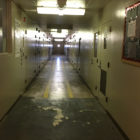
Federal bureau releases new data on reported sexual assault and harassment in juvenile facilities
|
“These incidents could have had multiple victims or multiple perpetrators, which could result in more persons involved than the total number of incidents,” wrote researchers, who collect that data to meet mandates of the federal Prison Rape Elimination Act.
Most of the victims were boys, who, as a group, outnumber incarcerated girls, analysts found.



